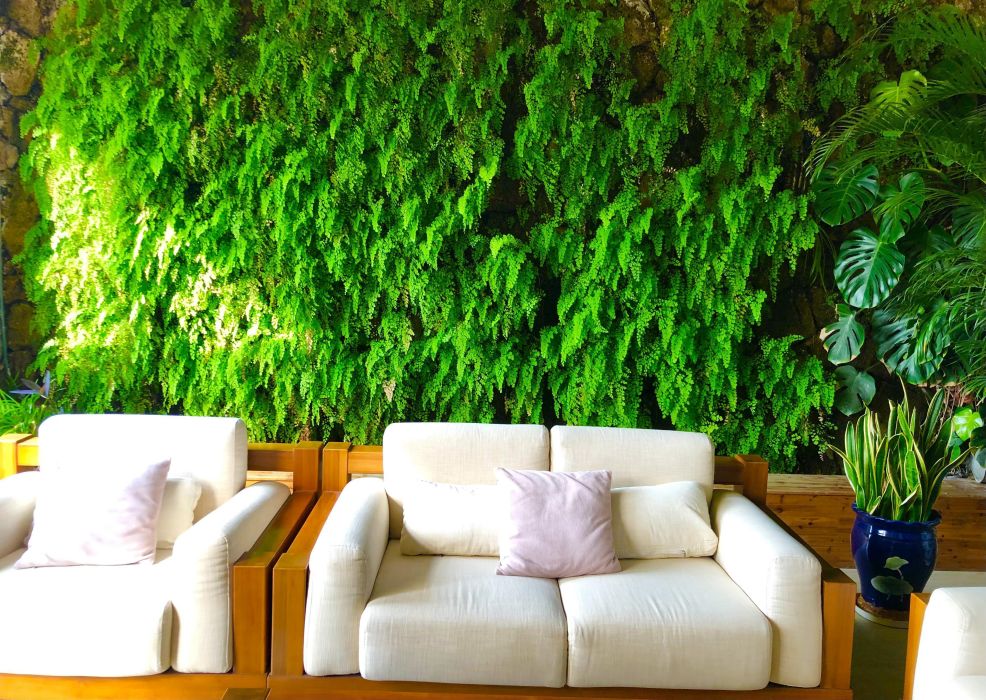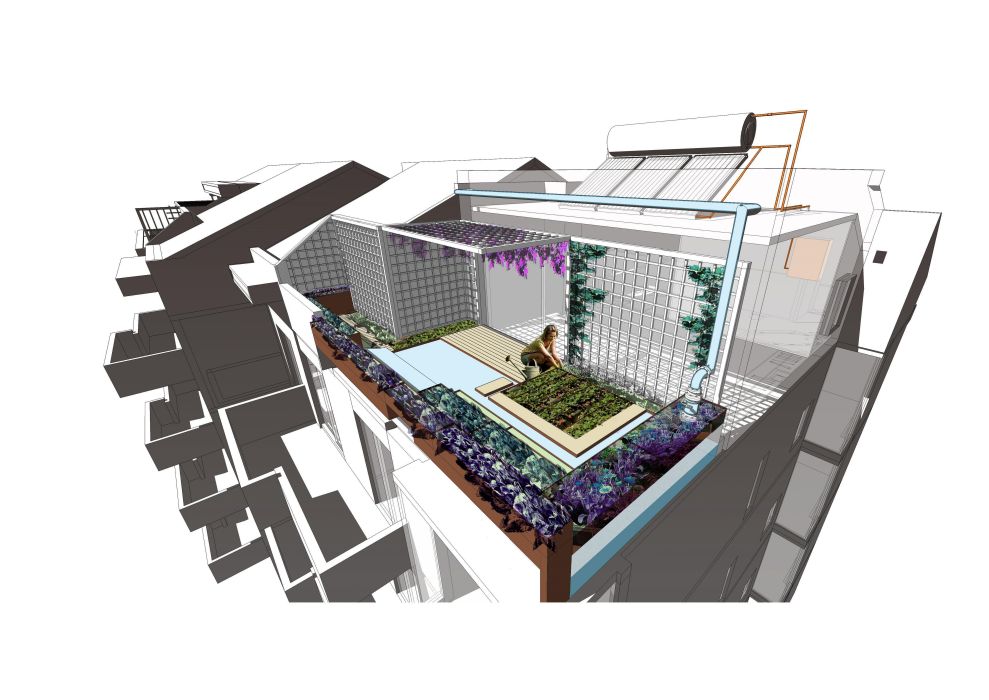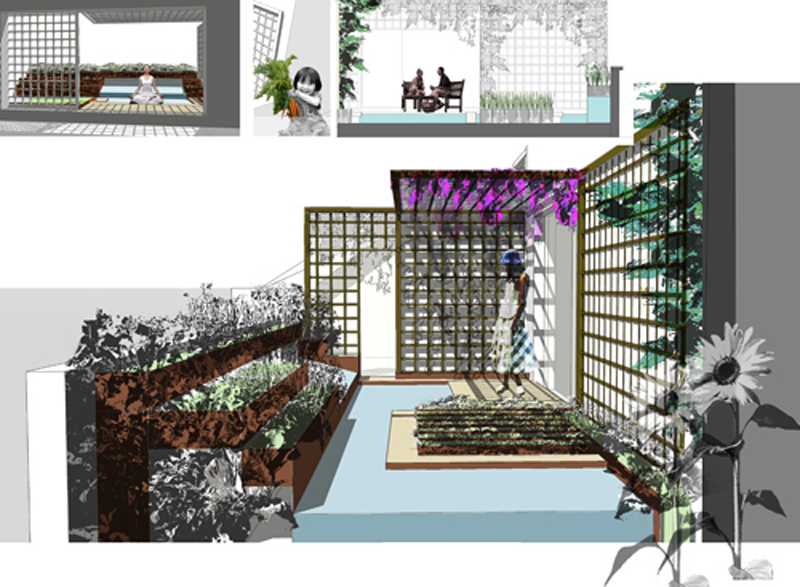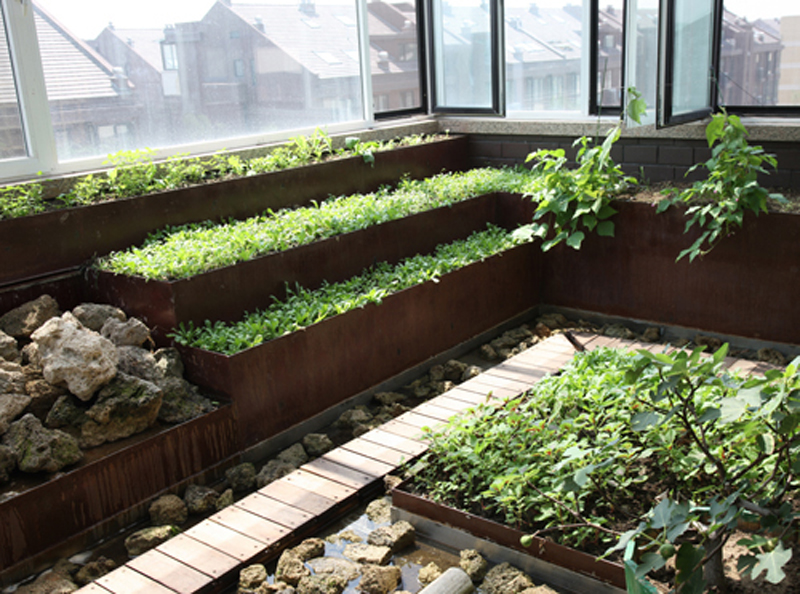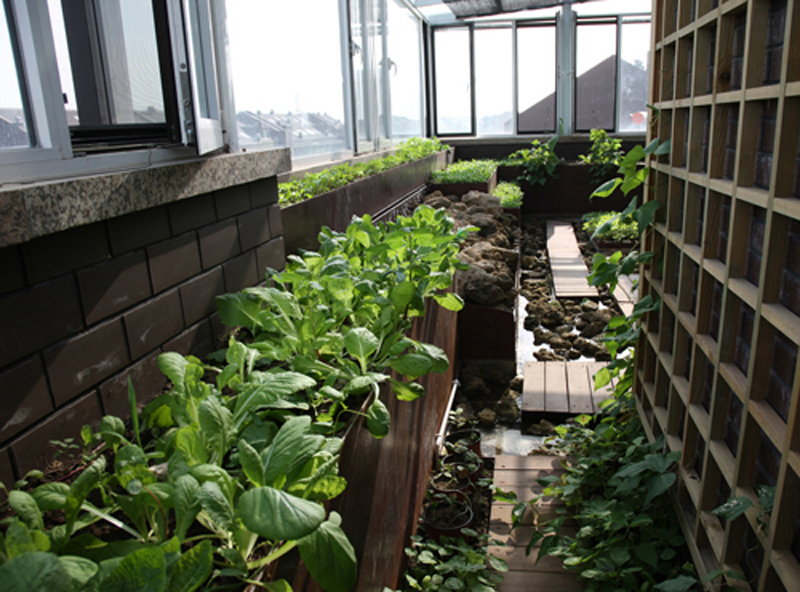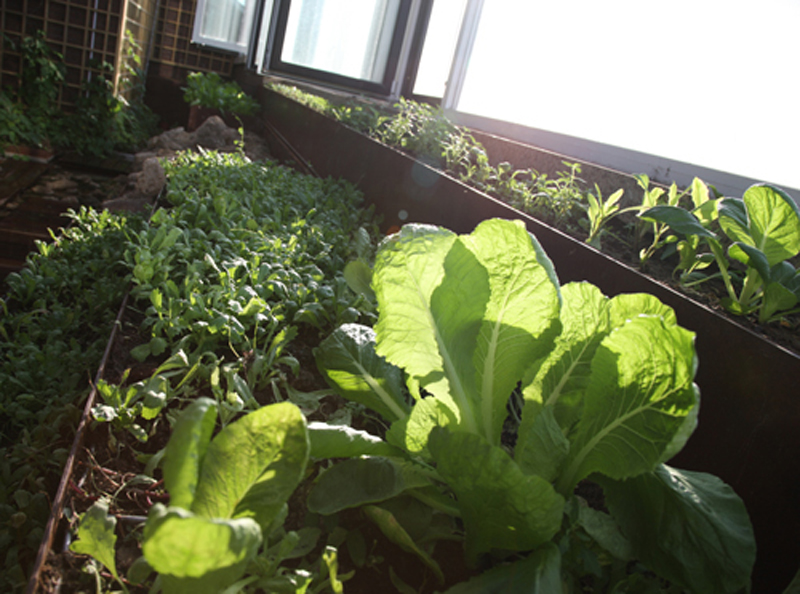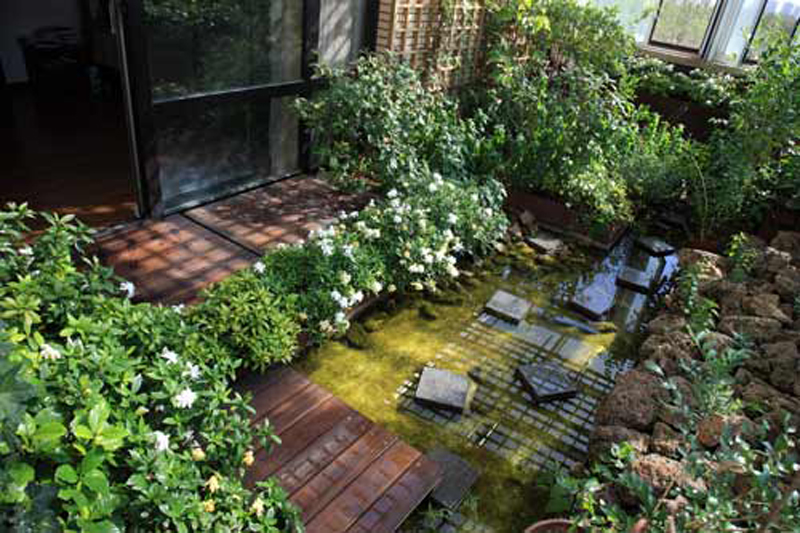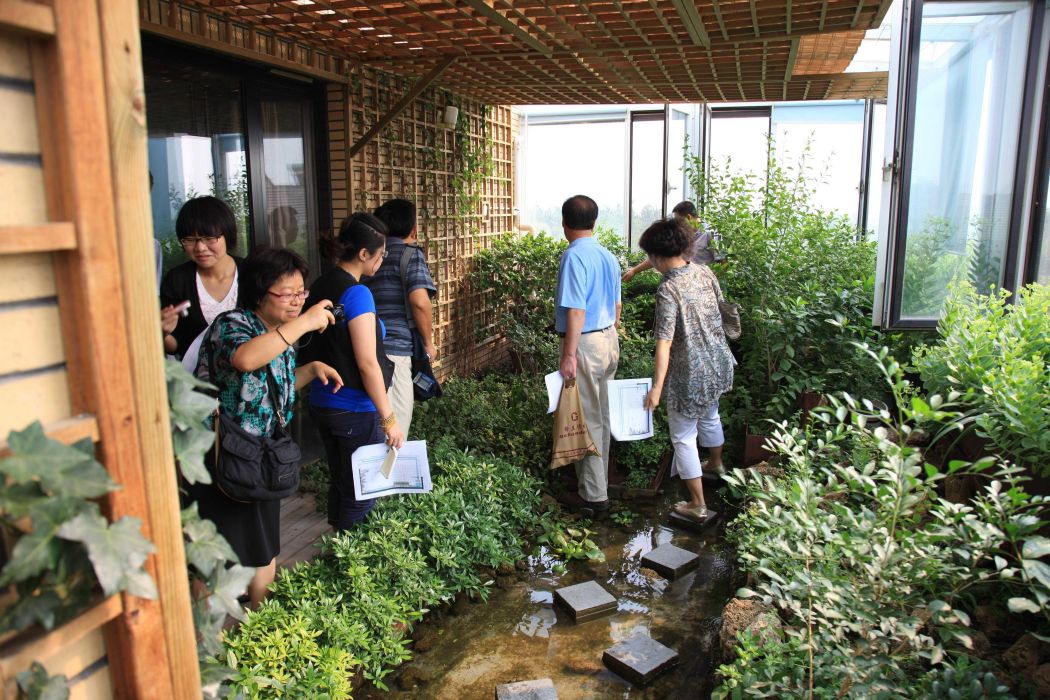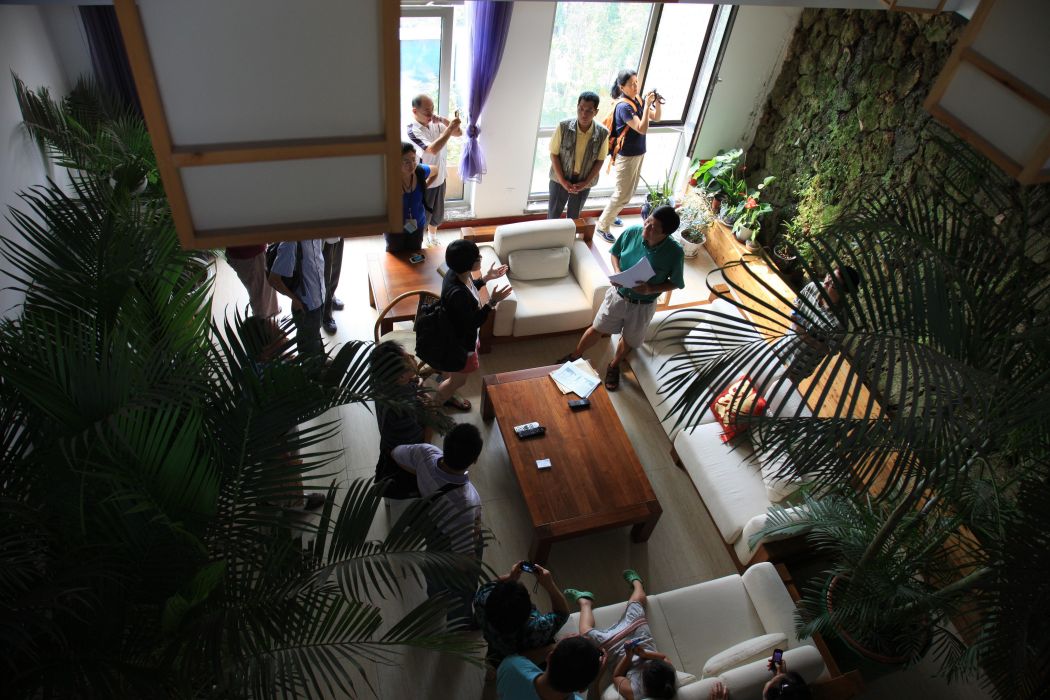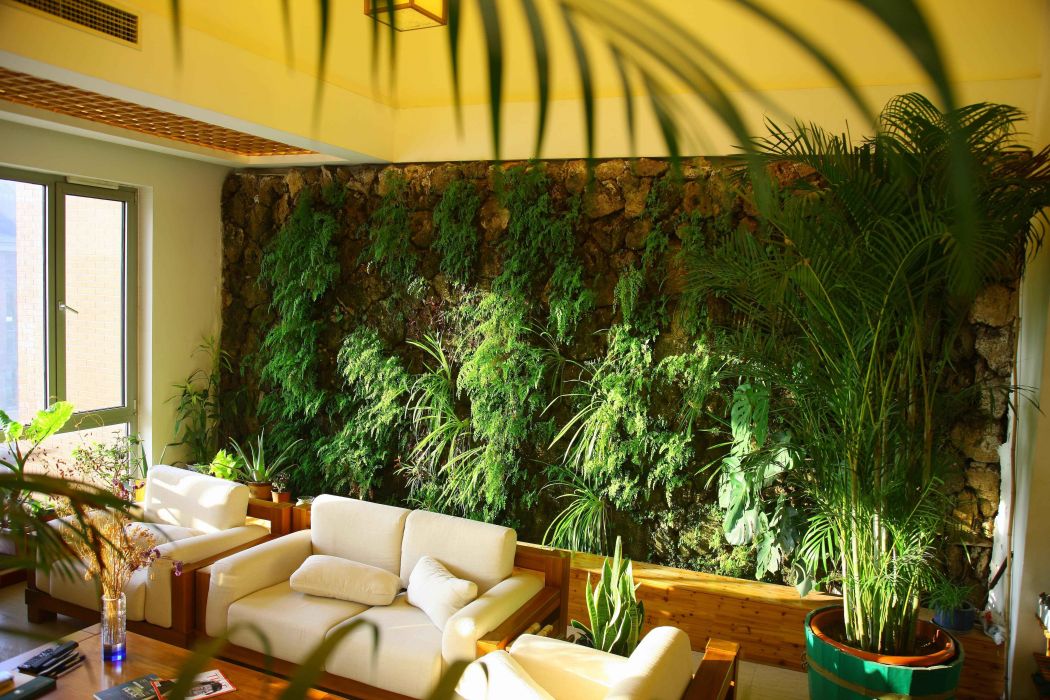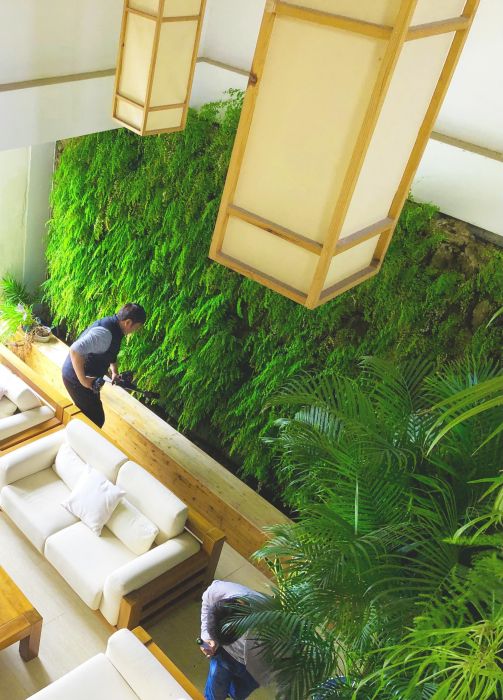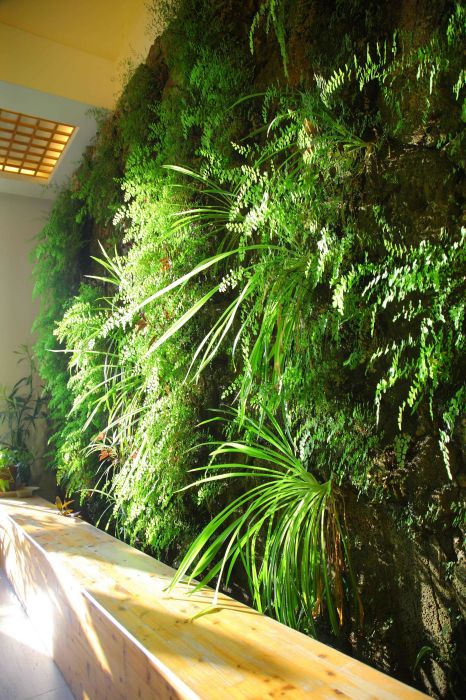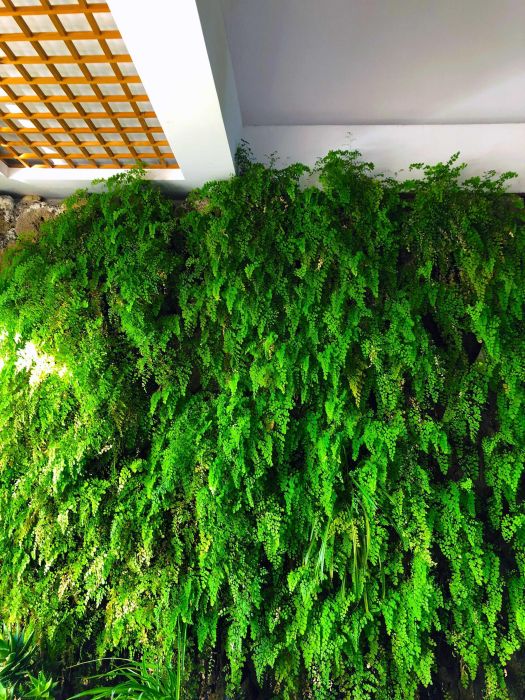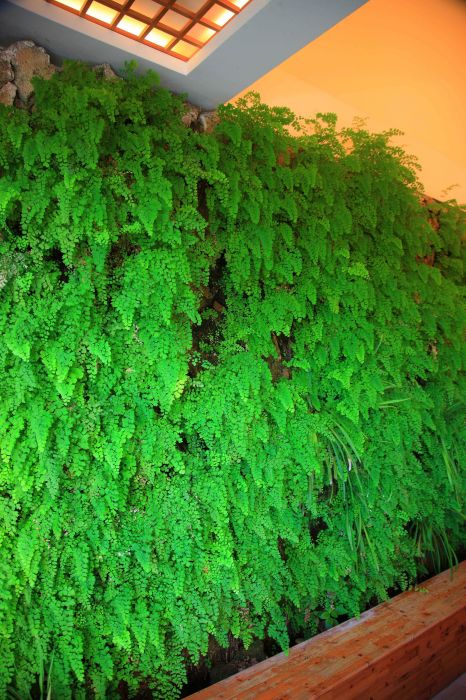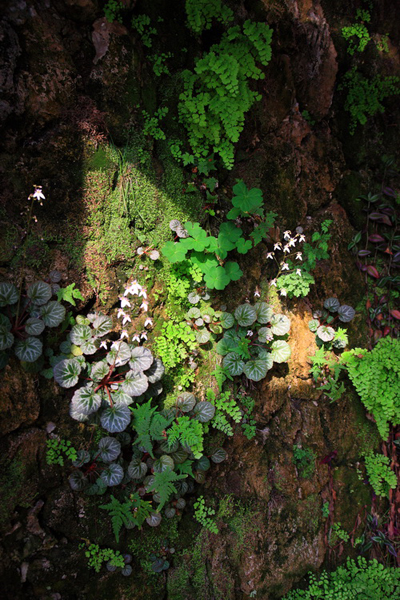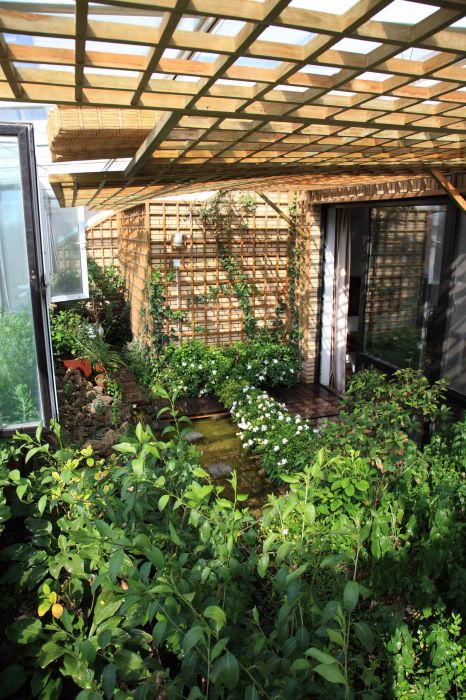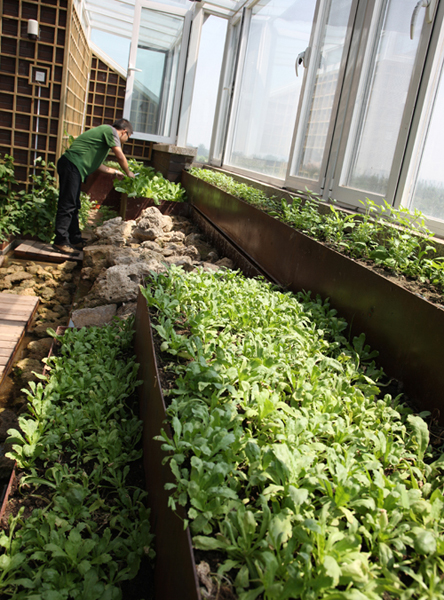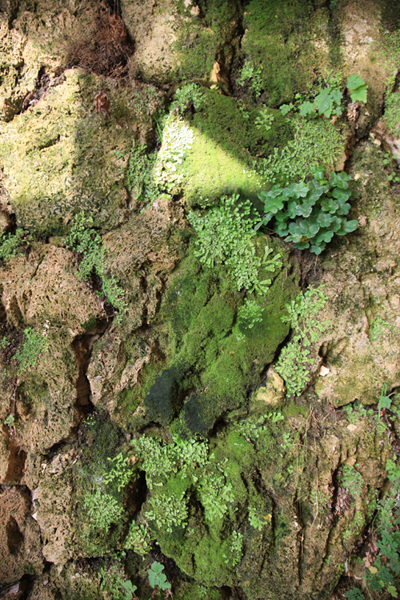Beijing Brown Stone Apartment
Project Information
- Project Location:
- China Beijing
- Project Scale:
- 280 Square Meters
- Design Time:
- 2010
- Build Time:
- 2010
- Related Papers
Project Profile
1. Project Statement
In a harsh climate and high density community, solar energy and rain water are harvested for a balcony garden and indoor living wall to transform two apartments into productive ecosystems that provide fresh fruits and vegetables for the kitchen, mediate temperatures in the living environment, and offer a refreshing urban living experience. These green interventions demonstrate how an ecological approach to fine scale urban design can reduce a home’s carbon footprint.
2. Design Strategy
In China, a housing shortage caused by rapid urbanization has led to poor quality construction of millions of square feet of high energy consuming apartments. The green building and low carbon campaigns in recent years give incentive to improve energy efficiency of existing buildings. The challenge is to upgrade efficiency of a unit at a cost that will repay itself quickly through lower energy bills and create a replicable model for others to follow.
The project is located in northwestern Beijing in a high density community. The climate in Beijing is one of extremes with night time winter temperatures as low as 5°F and day time summer temperatures approaching 100°F. Strong winds force residents to contend with sandstorms in February till April and majority of the city’s 20 inches of rain falls during July and August.
In this city noted for weather extremes, creating a livable outdoor space while improving energy efficiency inspired an innovative design solution. The transformation of two apartment units at the 4th-5th floors demonstrates how landscape design can become an architectural tool to reduce energy consumption. These balconies were unoccupiable most of year because of extreme winds, rain, or temperatures, but at a gracious 325 square feet of space in a city where space is premium, they beckoned use by the homeowner.
The balconies at the 5th floor were converted into two distinct garden spaces: a productive vegetable garden and a fragrance garden. The layout is the same for each and a simple glass enclosure protects the gardens and gives the residents a year round growing season. A central design element is the balcony pond made accessible with stepping stones and a wooden platform that looks like an extension from the bedroom. A trellis system supports vines growing on the wall and overhead for greater shading. Rusted steel planters save space and add a modern element against traditional garden materials. The planters are terraced to create a sense of depth and provide ample sunlight for the plantings. The terracing also creates space to hide and contain collected rain water. The stored water is used for irrigation and make up water for water features and two solar panels located on the roof provide heated water for the homes.
In the vegetable garden, the owner has access to a mix of fruits, herbs, and vegetables available just a few steps away from the kitchen. The trellis system provides support for climbing fruits and vegetables such as peas, gourds, and squash.
In the fragrance garden, subtropical fragrant plants are used such as jasmine, gardenia,Sweet Osmanthus,and white Michelia to create a fantastic fragrant atmosphere for the master bedroom.
A striking ecological component of the design is found just inside the main room at the 4th floor where the common wall between the two apartments was removed and replaced with a living wall. The living wall concept embraces ecology’s evolving form in exchange for providing ecological services in the home.
The wall is constructed with a native limestone and the porosity of the rock allows water to slowly seep out from the crevices. Harvested rainwater is released at the top of the wall where it slowly trickles out of the stones where mosses begin to grow and create an ever changing canvas. The water evaporates and cools the home in the summer and makes a more comfortable humid environment during the drier months. Water collects in the basin at the bottom where visitors can sit on the ledge and watch the fish that are used to control insects and mosquitoes. One year after the installation, the living wall maintains a cooler temperature throughout the apartment, making conventional air conditioning unnecessary for either home during the entire summer.
3. Conclusion
The living wall inside and the productive landscape outside culminate into a synergy of urban agriculture and ecological services. For less than 10,000 US dollars, this project has improved livability in a dense urban community; has reduced energy consumption through water harvesting, solar panels, and a living wall; and provides fresh food in a charming living space. This home serves as an educational model for greener communities and as a source of inspiration for developers and homeowners for manageable green living upgrades.
